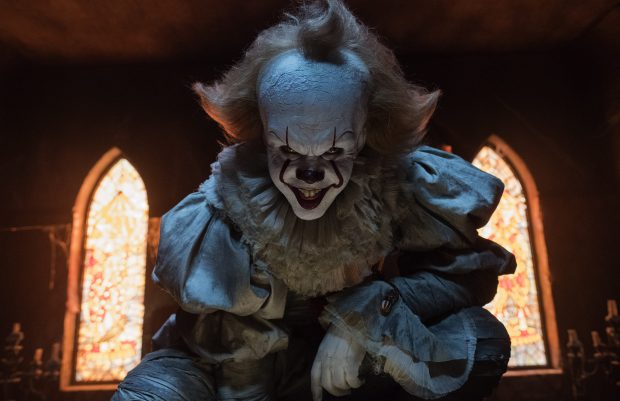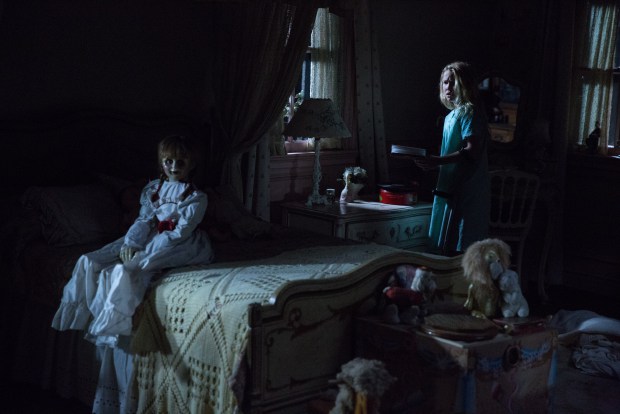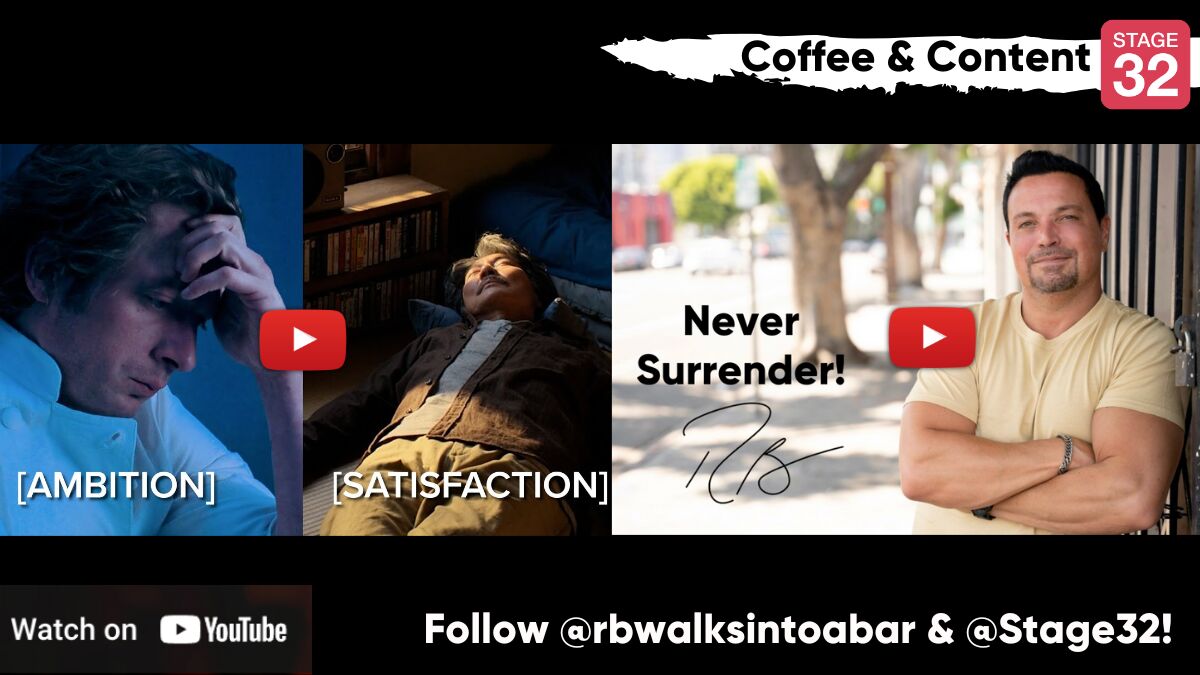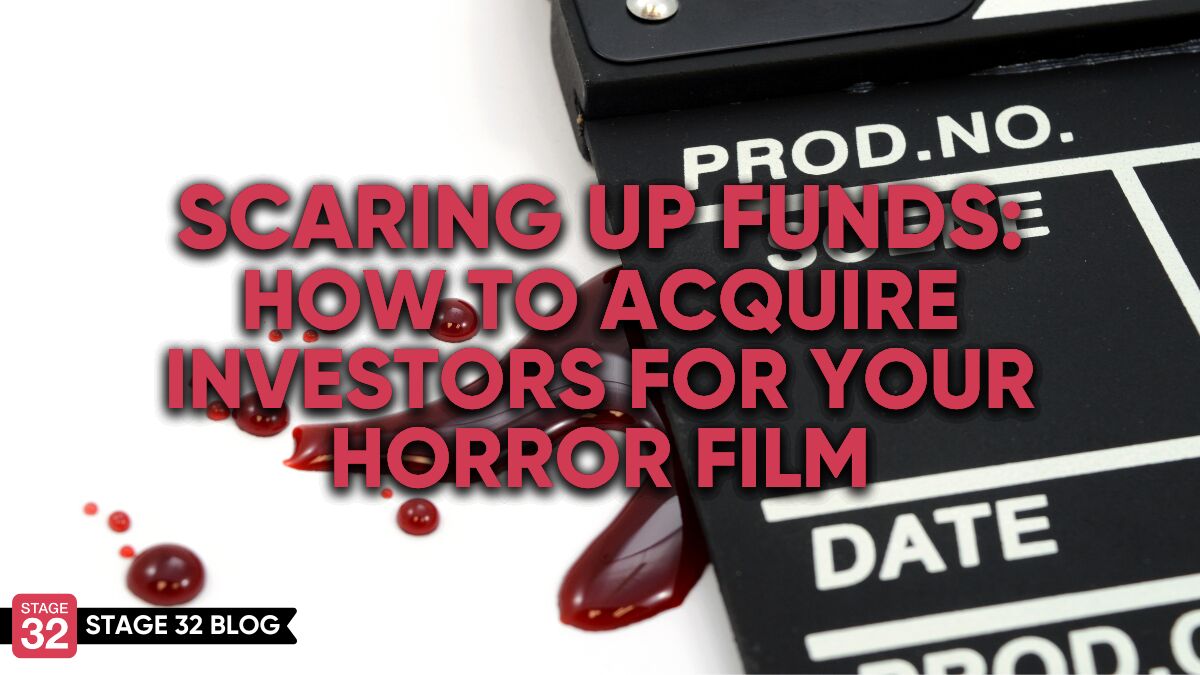Scaring Up Funds: How to Acquire Investors For Your Horror Film
We’ve all heard the stories.
Paranormal Activity, a film with a budget slightly less than a used Honda, made $193 million worldwide and launched a profitable franchise. That film’s progenitor, The Blair Witch Project, had a $60K budget and turned out a $250 million box office haul.
The most profitable films from 2010 to 2015 were all horror films.
10. The Last Exorcism ($68M gross vs. $1.8M production budget)
9. Annabelle ($257M vs. $6.5M)
8. Chernobyl Diaries ($37M vs. $1M)
7. Insidious 2 ($162M vs. $5M)
6. The Purge ($89M vs. $3M)
5. Paranormal Activity 3 ($207M vs. $5M)
4. Unfriended ($64M vs. $1M)
3. Paranormal Activity
2 ($177M vs. $3M) 2. Insidious ($97M vs. $1.5M)
1. The Devil Inside ($102M box vs. $1M)
In 2016, three horror films with budgets under $10 million found box office gold: Don’t Breathe, The Purge: Election Year, and Lights Out. Each grossed over $100 million at theaters worldwide. Not too shabby. This year, mainstream hit Get Out garnered $252 million in box office against a $4.5 million budget, while Split raked in $277 million against a $9 million budget.
While summer 2017 proved to be one of the worst ever at multiplexes and witnessed the collapse of once trusty franchises like Transformers and Pirates of the Caribbean, two low-cost New Line Cinema (the house that Freddy Krueger built) productions, Annabelle: Creation (gross as of September 11 was $96 million against a $15 million budget) and It (with a record-shattering horror debut of $123 million versus a $35 million price tag—biggest horror opening ever).
Anybody see a pattern here? Yes, horror sells, and you don’t need a Marvel Studios budget to get the kids past the turnstiles.

Bill Skarsgård’s Pennywise may be a clown, but It‘s record-breaking box-office numbers are nothing to laugh at.
Photograph by Brooke Palmer, courtesy of Warner Bros. Pictures
Investors drool, and moviemakers dream, “How can we get in on this action?” What makes these films so profitable, and what can I do to assure that I’m going to get that kind of return on investment?
Let’s start with some of the basics. All investors, even those adventurous types, look for risk mitigation. Folks with money may be willing to risk, but only if the reward warrants that risk. It is inarguable that horror rakes in the cash, and it sells internationally too.
When you think about the world market, this makes total sense. If a monster jumps out of a dark closet and devours an innocent victim, that will illicit the same response in Laos as it does in Louisiana, the same in Ecuador as Europe. Scares are universal. And while Westerns, musicals and romantic comedies fall out of favor with fickle audiences, horror is an evergreen market, building on a dedicated and borderline-obsessed fan base that keeps up on the latest productions by surfing the web, going to weekend horror conventions and staking out promising new scare pictures at film festivals in major cities.
So, what should a filmmaker consider when trying to seduce investors into throwing in with their film project? Let’s take a look.
Genre
If you’ve chosen horror (smart move!), then you’ve taken the first step toward mitigating the risk for your investor. You’ve chosen the highest ROI of the mainstream narrative market.
Script
A well-written, original idea is the first line of defense for mitigating an investor’s risk. A good script has clear story logic, creates an immersive world with consistent rules, and motivates both the main characters, and their opponent (whatever evil entity, or killer that has run amok). On the other hand, scripts that fail to impress often have main characters that are acted upon rather than proactive, little-to-no real risk, and little-to-no escalation of pressure and stakes. While it’s very possible to make a bad film from a good script, it’s nearly impossible to make a good film from a bad script. Make sure the script is ready for prime time. Put you best foot forward from the get-go.
Budget
How low can you go? One thing the examples above have in common is tight budgets. None of the films come close to a $10 million price tag and the majority are significantly under $5 million.

Annabelle: Creation earned about 15 times the amount of its budget at the box office. Image courtesy of Warner Bros.
Team
Investors want to know that the film is in good hands—talented hands. They want a director who is either experienced, or can demonstrate a grasp of filmmaking, a producer who can deliver added value, watch the cash flow with eagle eyes, and maximize the bang for the buck.
Cast
If you don’t have a Jordan Peele and/or Jason Blum behind you, then you should consider a name actor for your film. Having a lightning rod in your cast will increase the likelihood for interest from international sales agents. At the very least, you look for actors that have the skill to elevate the level of the production. Look for actors with appeal outside the horror market. The savvy, hit-TV-show casting of the Scream films, for example, attracted an untapped audience unaccustomed to the horror franchises like Halloween that Scream satirized.
Marketing
Filmmakers are often focused on getting their films made, but investors want to know that the film is going to have life. Marketing is key to assuring that there’s a path to returning income to your investor. Your marketing plan should include your vision for distribution, identify the audience for your film, and have an idea how you might reach that audience. Draw up a festival plan for your movie (both features and shorts) and budget accordingly (most festivals charge submission fees). Popular horror hits like Saw, Cabin Fever, Blair Witch Project, Paranormal Activity, Insidious and Unfriended gained word-of-mouth momentum after debuting at film fests like Toronto, Sundance, Fantasia, Screamfest and others, raising the eyebrows of curious, big-spending major distributors such as Lionsgate, Universal and Paramount. Exposure at festivals and conventions also builds awareness for your film and helps penetrate exploding auxiliary markets like SVOD and VOD, where any extra publicity is crucial in helping you film stand out from the pack.
Location
One way to make investors take notice is to show them that you’re paying attention to their risk, and doing all you can to lessen the financial impact. A relatively easy way to do this is to produce the film in a location that has a robust tax rebate or incentive. Incentives range from zero to 60 percent. The rules for application and disbursement vary wildly, so do your research. Also, many horror smashes like Don’t Breathe and Paranormal Activity kept production costs desirably low by mostly utilizing a single location.
You now understand some of the steps to help mitigate the risk to investors. How, then, do you fund your film? For now, we’ll ignore the studios and concentrate on the independent route for financing a picture.
This article was co-written by Tony Timpone.
Let's hear your thoughts in the comments below!
Got an idea for a post? Or have you collaborated with Stage 32 members to create a project? We'd love to hear about it. Email Ashley at blog@stage32.com and let's get your post published!
Please help support your fellow Stage 32ers by sharing this on social. Check out the social media buttons at the top to share on Instagram @stage32 Twitter @stage32 Facebook @stage32 and LinkedIn @stage-32
| Coffee & Content: Hollywood's Obsession with Ambition! |
| 5 Steps You Need Now to Protect Your Focus and Creativity |
















Glad to read horror is a big sell. I'm looking for funding as a screenwriter. I've written a collection of horror scripts. Trying to break into the industry, through the independent circuit. I sent you a request to connect.
Copy the link below to share this page:
1 person likes this
Interesting piece, the principles of which are applicable to any genre not just horror. The difficulty here is that while the numbers speak loudly, as mentioned, it's likely so many people have discovered the potential, the market is well over saturated. The trick is to come up with an original idea...
Expand postInteresting piece, the principles of which are applicable to any genre not just horror. The difficulty here is that while the numbers speak loudly, as mentioned, it's likely so many people have discovered the potential, the market is well over saturated. The trick is to come up with an original idea in this well over saturated genre. Although, our local multiplex regulatory has a new horror screening, so maybe it's not the idea that attracts the audience, but purely the execution, mood, threat, fear etc. the thrill ride, that the audience go back for.
Copy the link below to share this page:
2 people like this
Thank you, Brian
Copy the link below to share this page:
1 person likes this
Great blog, Brian and Tony! Thanks for sharing the advice and insight! Horror has some of the best marketing I’ve seen.
Copy the link below to share this page: